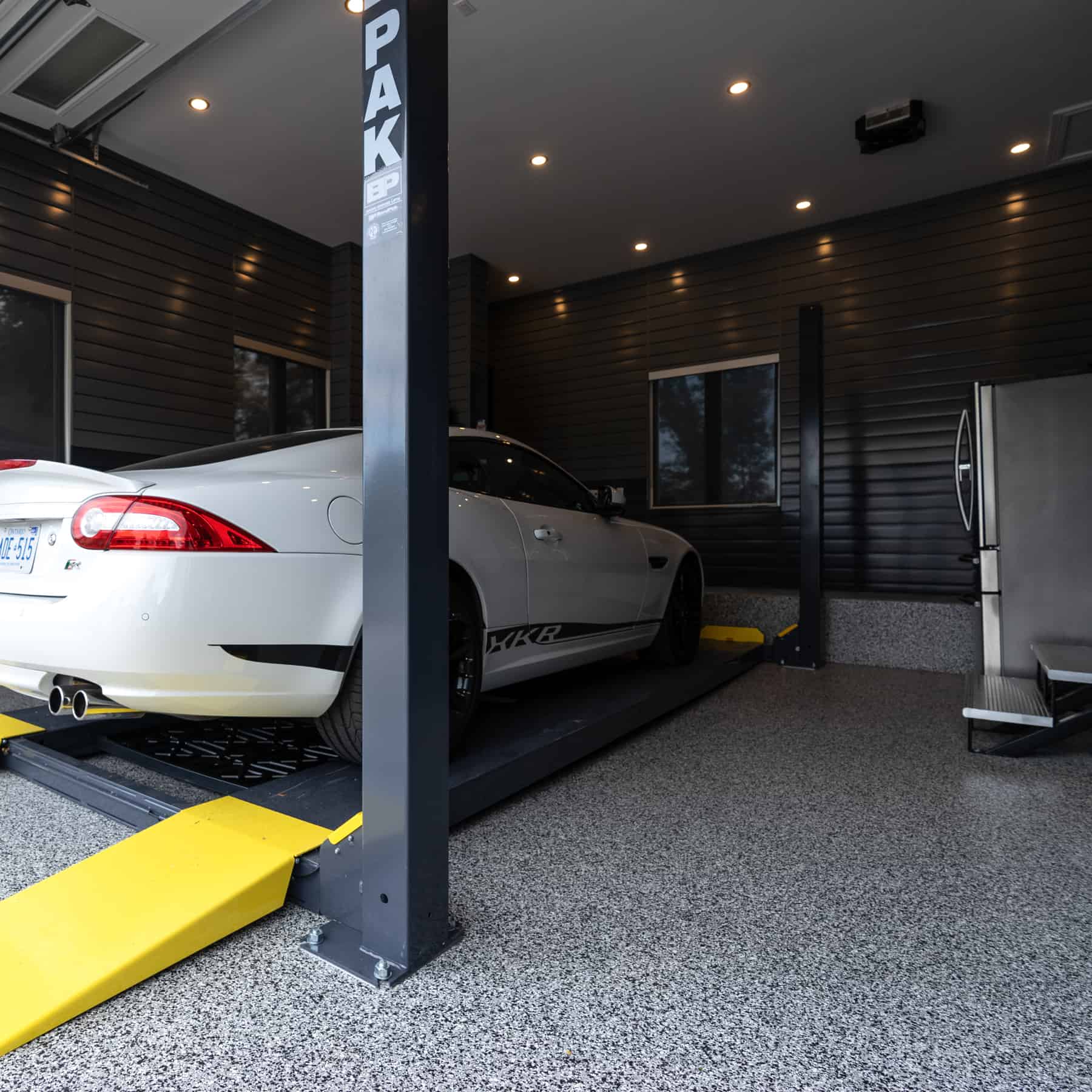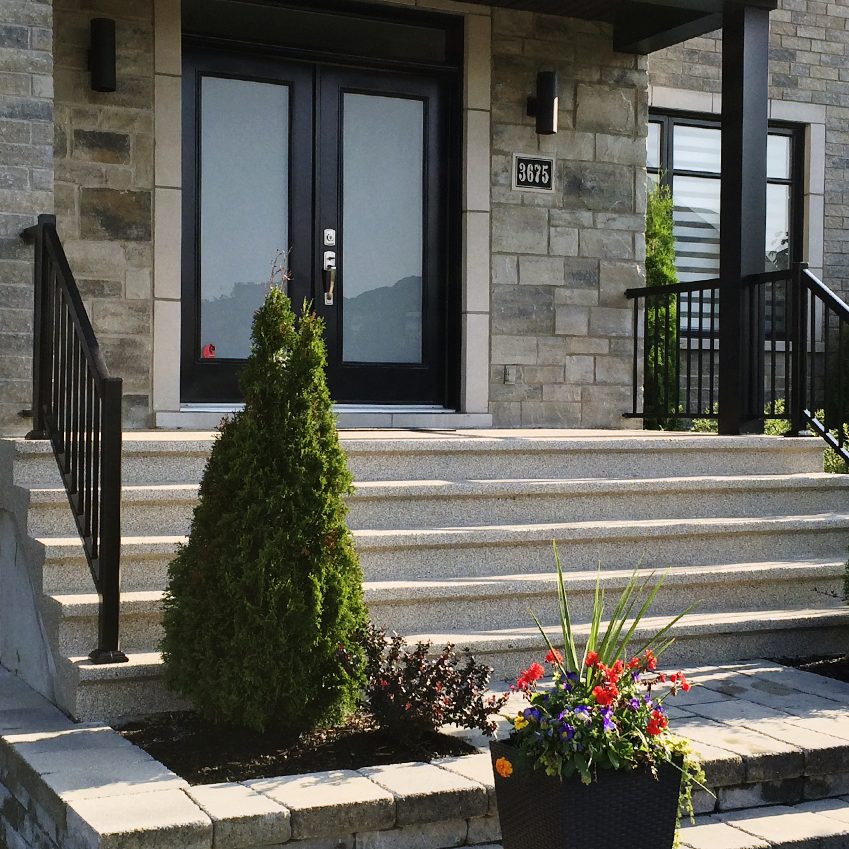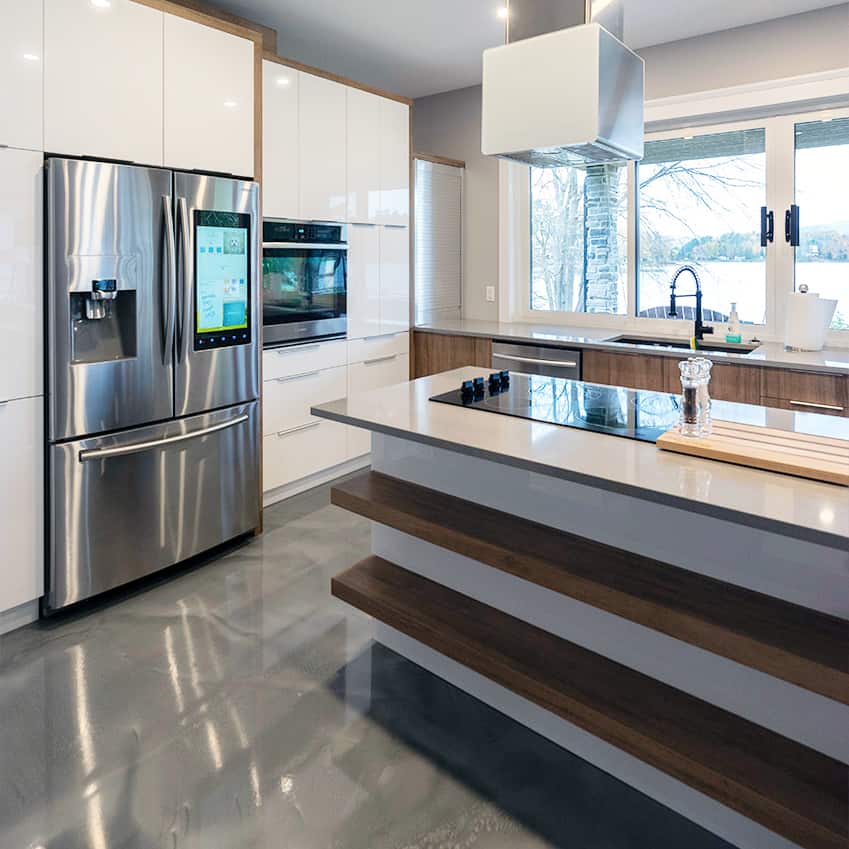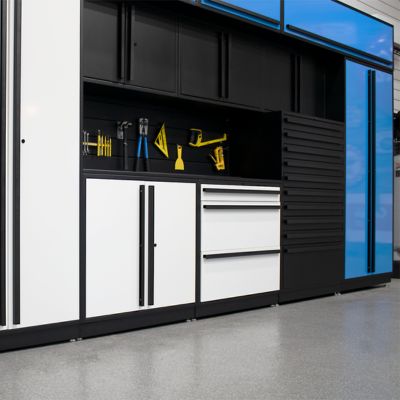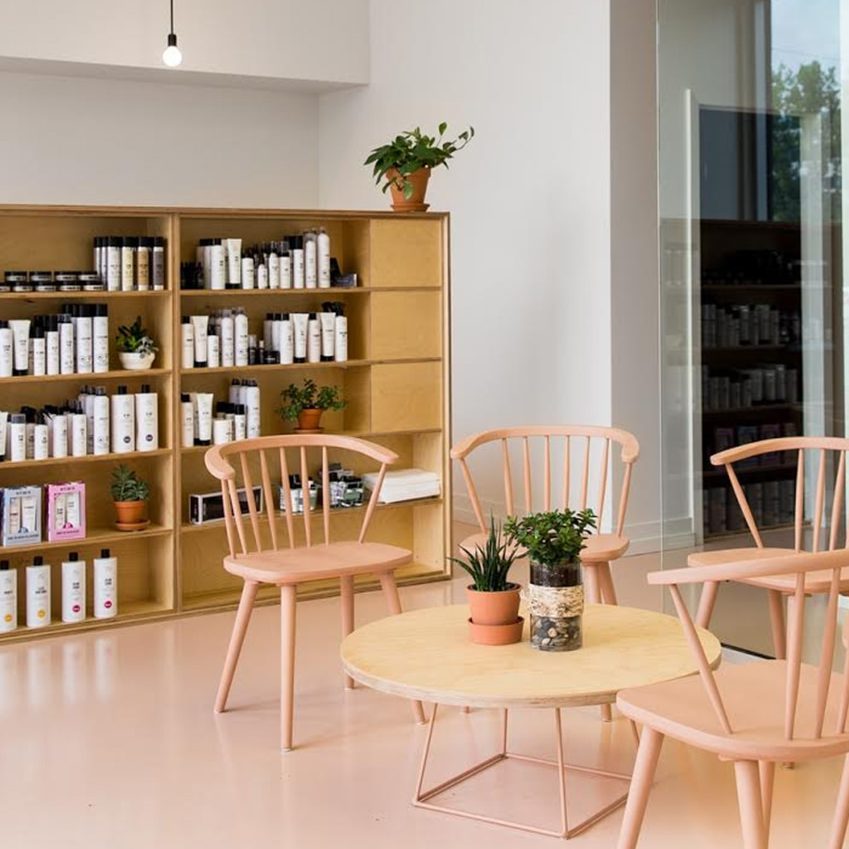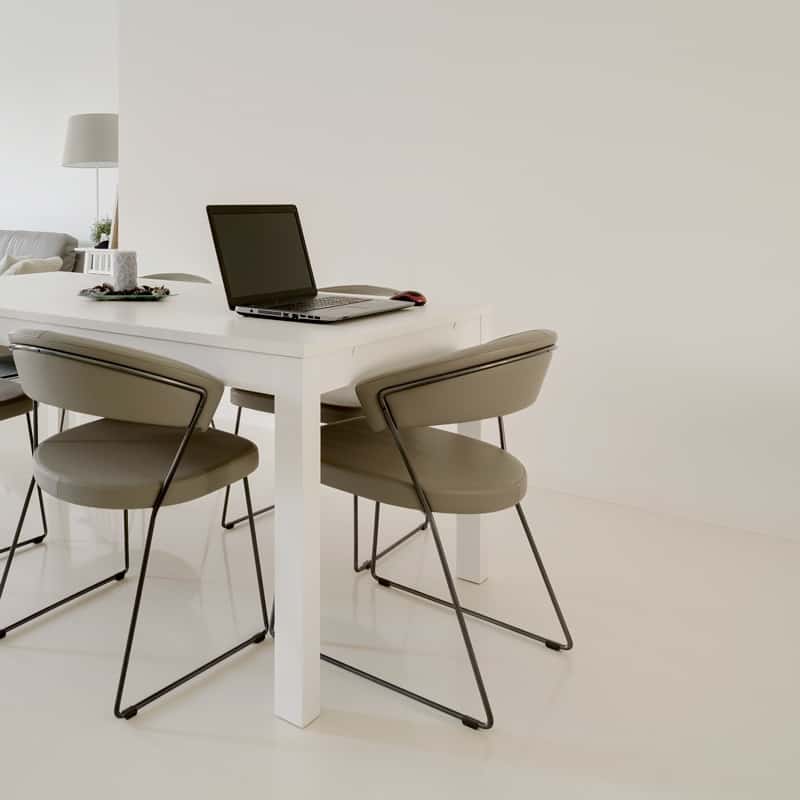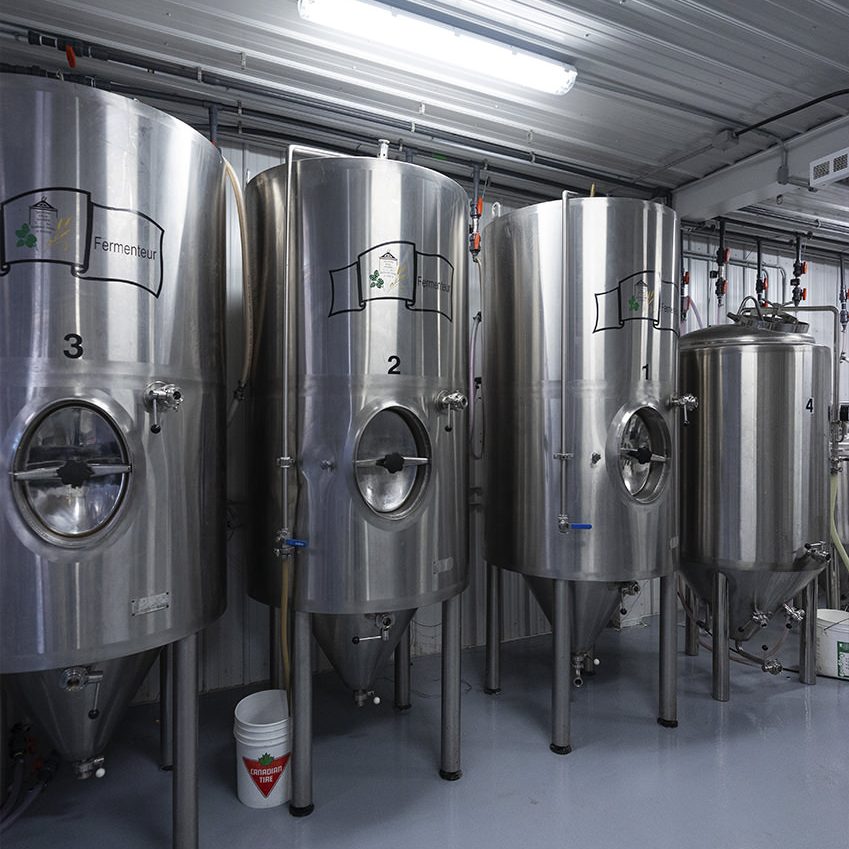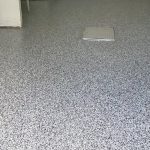Kitchen flooring: 10 perfect coatings
Hardwood: A timeless material
Benefits
Hardwood is appreciated for its natural beauty and warmth. It offers an elegant, timeless look that can be adapted to a variety of decorating styles.
Disadvantages
However, hardwood is sensitive to humidity and temperature variations, which can lead to warping. It also requires regular maintenance to preserve its finish.
Hardwood maintenance
To keep a hardwood floor in good condition, it’s essential to clean it regularly and protect it from scratches and moisture. Periodic application of a sealer or wax can help prolong its life.
Ceramic as a kitchen floor
Benefits
Ceramic tiles are sturdy, water- and stain-resistant, and available in an infinite variety of colors and patterns.
Disadvantages
Ceramic tiles can be cold and hard underfoot, and joints may require more frequent cleaning to prevent dirt and mildew.
Price and maintenance
Ceramic is generally affordable and easy to maintain. Regular cleaning with appropriate products is enough to keep it looking like new. Value for money remains a very attractive alternative for residential coverings.
Vinyl: economical and easy to maintain
Benefits
Kitchen vinyl flooring is an economical option that offers excellent resistance to water and stains. It is available in a wide range of finishes imitating more expensive materials such as wood or stone.
Disadvantages
Vinyl can fade over time and is susceptible to damage from sharp objects, making it perhaps not the ideal candidate for families with young children.
Price and maintenance
Vinyl is one of the most affordable floor coverings available. It’s easy to maintain with a simple sweep and regular washing.
Bamboo kitchen flooring
Benefits
Bamboo is an eco-friendly alternative to hardwood, offering great durability and an elegant appearance.
Disadvantages
Like wood, bamboo can be sensitive to moisture and scratches. It also requires regular maintenance.
Price and maintenance
Bamboo is generally affordable and easy to maintain. Regular cleaning and the application of a sealer can help extend its life.
Cork: Another environmentally friendly coating
Benefits
Cork is comfortable underfoot, provides good thermal and acoustic insulation, and is a sustainable and renewable option.
Disadvantages
Cork is sensitive to scratches and moisture, and may require more regular maintenance to maintain its appearance.
Price and maintenance
Cork is relatively affordable. It requires gentle cleaning and periodic application of a sealer to protect its surface.
Laminate: an economical and attractive kitchen floor
Benefits
Laminate kitchen flooring is easy to install, available in a wide range of finishes, and resistant to scratches and stains.
Disadvantages
Laminate can be sensitive to humidity and should not be exposed to large quantities of water.
Price and maintenance
Laminate is economical and easy to maintain. Regular sweeping and damp cleaning are all it takes to keep it in good condition.
Stone: a high-quality material
Benefits
Natural stone tiles such as granite and marble offer unrivaled natural beauty and exceptional durability.
Disadvantages
Stone can be expensive, and some types require regular maintenance to prevent staining and wear.
Price and maintenance
Stone cladding is often more expensive, but offers great value and longevity. Regular cleaning and sealing are necessary to protect the surface.
Metallic epoxy: a modern material with unique aesthetic appeal
Benefits
Metallic epoxy creates a unique, glossy surface that can be customized with a variety of effects and colors. It’s also extremely durable and stain-resistant.
Disadvantages
The cost of installing metallic epoxy can be high, and it requires careful surface preparation.
Price and maintenance
Metallic epoxy is expensive but offers exceptional durability and aesthetics. It requires minimal maintenance.
Concrete for your kitchen floor
Benefits
Concrete is strong, durable and can be customized with a variety of stains and finishes. It is highly resistant to wear and stains.
Disadvantages
Concrete can be cold and hard underfoot, and requires regular maintenance to prevent cracking and wear.
Price and maintenance
Concrete is affordable and easy to maintain with regular cleaning and the application of sealants.
Solid Color Epoxy: a material that can be customized at will
Benefits
Epoxy offers a smooth, stain- and impact-resistant surface, and can be customized with a variety of colors and patterns.
Disadvantages
Epoxy requires professional installation and can be costly.
Price and maintenance
Epoxy is durable and easy to maintain, requiring regular cleaning and the application of sealants to maintain its appearance.
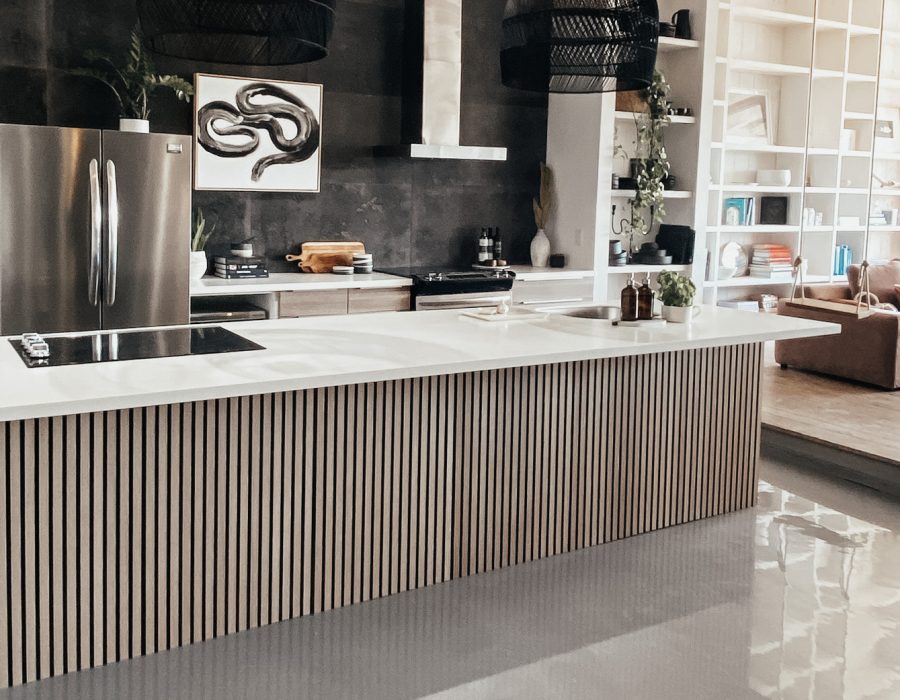
YOUR GARAGE CAN BE BETTER. WE’D BET ON IT!
A turnkey setup, without the hassle.
Still got questions?
Let us know!
Fill the form bellow
